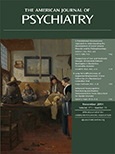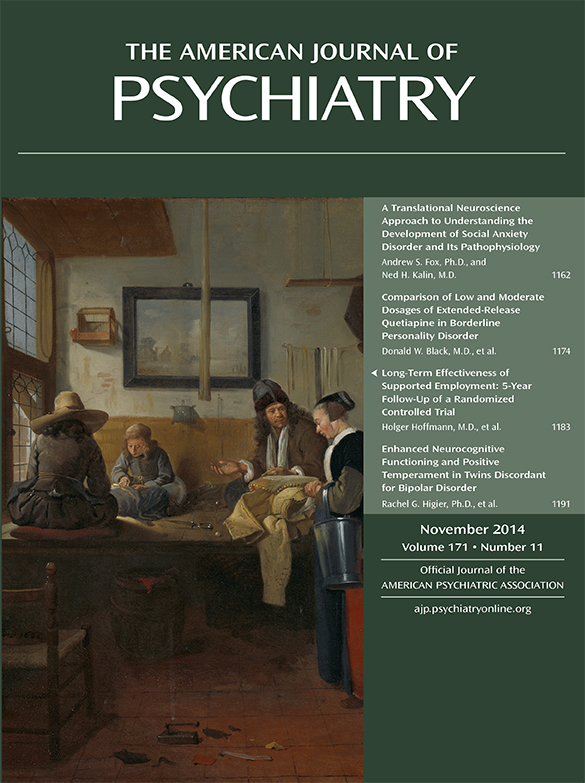Case Presentation
“Ms. K,” a 30-year-old uninsured Russian-speaking woman with bipolar disorder, was brought to the emergency department by family members for aggressive behavior and religious preoccupation. She had stopped taking her prescribed olanzapine and valproate a week earlier. Her medical record showed nine previous psychiatric hospitalizations and a history of hypothyroidism and obesity.
Ms. K’s vital signs in the emergency department were initially stable, with the exception of a pulse between 100 and 115. Results of a chemistry panel, liver function tests, and a blood count were normal. A toxicology screen and blood alcohol test were negative. The patient was deemed medically clear and referred to an acute inpatient psychiatric facility. Because no beds were available, she was restrained in her hospital bed with a Posey belt for 2 days before she was transferred, in accordance with emergency department policy. During her stay in the emergency department, she received no medications but became progressively more withdrawn and hypoactive.
On admission to the psychiatric facility, Ms. K’s pulse was 112, her blood pressure 106/78 mmHg, her temperature 37.4°C, and her O2 saturation 98%. She exhibited diminished spontaneous movements and goal-directed behavior and required extensive prompting and supervision to walk into the dayroom. On interview, she was unengaged, with poor eye contact and minimal spontaneous speech. She exhibited psychomotor slowing and spent long periods standing still in the central area of the dayroom, staring ahead.
She was started on lorazepam, 2 mg t.i.d., for catatonia. She soon began to improve, ambulating to meals and to the dayroom with minimal prompting. On day 3 of her hospital admission, olanzapine and valproate were restarted. On day 7, she spent most of the day out of bed and requested to bathe. Staff went to check on her and found her collapsed in the shower. No spontaneous breaths or pulse were detected; CPR was performed, but she was pronounced dead. After an autopsy, the coroner reported “a large, nonmalignant mucinous tumor of the left ovary that occupied nearly a third of her abdominal cavity” and “obstructed pelvic veins and lower IVC [inferior vena cava] enough to cause deep vein thrombosis. Her fatal complication was acute massive pulmonary thromboembolism.”
Further history from the family revealed that before Ms. K’s psychiatric decompensation, they had brought her to local emergency departments on three occasions recently because of increasing abdominal girth and discomfort. They initially suspected that she was pregnant, but repeated pregnancy tests were negative. Two of the hospitals performed ultrasound examinations and identified a likely benign ovarian mass. Both deemed it nonemergent and instructed the patient to follow up with outpatient gynecologic services, which her family was unable to coordinate.
Discussion
Pulmonary embolism (PE) is a well-recognized and relatively common complication of medical and surgical hospitalizations. It carries a high risk of death, with a mortality of 12% within 1 month of diagnosis. The majority of PEs develop from the dislodging of deep vein thrombi in the lower extremities. While the deep vein thrombosis (DVT) itself may be asymptomatic, large pulmonary emboli may present with tachycardia, chest pain, or shortness of breath. There are over 3,000 deaths per year from PE in the United States (
1), and many medical hospitals have implemented routine preventive measures to minimize this risk for patients.
Evidence suggests that psychiatric patients have an elevated risk of PE compared with healthy individuals (
2), and associations have been shown between PE risk and certain psychiatric diagnoses (
3). In addition, many psychiatric treatment modalities predispose patients to the development of DVT and subsequent PE. However, to our knowledge, few inpatient psychiatric facilities routinely employ antithrombotic measures.
In 1993, an autopsy series in the Netherlands (
2) highlighted the higher incidence of PE in psychiatric patients. More than 14,000 autopsy records were reviewed to find patients in whom PE was listed as the sole cause of death. Only 27 patients met that criterion, and 10 of them were psychiatric patients. This finding was surprising, as psychiatric patients comprised only 5%–10% of the study’s referrals.
Neuropsychiatric Illness
Catatonia is known to increase the risk of PE; a 1995 article reported two cases and a literature search that revealed 20 previously reported cases (
4). Catatonia frequently presents with negativism or decreased movement, which disrupts venous flow and increases hemostasis. Catatonia is often a state of heightened anxiety and emotional stress, with increased levels of cortisol (
5) and catecholamines (
6), which contribute to endothelial friability and damage. Catatonic patients frequently decrease their oral intake, leading to dehydration, further increasing coagulability. In Ms. K’s case, it is likely that venous stasis, endothelial injury, and hypercoagulability all contributed to the development of her venous thrombosis and subsequent PE.
Less well understood is the increased risk for PE in patients with bipolar disorder and schizophrenia. A large Danish study (
3) compared more than 25,000 patients with bipolar disorder with more than 115,000 matched comparison subjects and found a higher incidence rate ratio (IRR) of PE in the group with bipolar disorder (IRR=1.61, 95% CI=1.38–1.88, p<0.001). Similar elevated rates were found for schizophrenia (IRR=1.78, 95% CI=1.27–2.51, p<0.001) and anxiety (IRR=1.49, 95% CI=1.10–2.02, p<0.01).
Treatments for bipolar disorder and schizophrenia may contribute to the risk of PE (see below). However, it has been postulated that the states of psychosis and mania themselves may contribute to thrombus formation. Like catatonia, both are conditions of increased catecholamine (
7) and cortisol (
8) production, which may contribute to endothelial damage and thus to thrombosis and PE.
Treatment
Many common treatment modalities for psychiatric disorders also increase the risk of coagulopathies, particularly antipsychotic medications. A 2011 meta-analysis of seven case-control studies (
9) compared 31,095 cases of PE with more than 143,000 control cases and found that the incidence of thromboembolism was 139% higher in patients taking any antipsychotic medication (odds ratio=2.39, 95% CI=1.71–3.35). The analysis was further broken down by classification of antipsychotic, as summarized in
Table 1. From these data, one could infer that clozapine, the lowest-potency atypical antipsychotic, would carry the highest risk of PE. Indeed, a study of the World Health Organization’s database of adverse drug reactions (
10) revealed 754 suspected cases of embolic events related to antipsychotic treatment, 375 of which were clozapine-related.
Other psychiatric medications have been implicated in thrombosis and PE, although less so than antipsychotics. A 2009 literature review (
11) found two cases of PE associated with selective serotonin reuptake inhibitors and a case-control study showing an increased risk with amitriptyline (odds ratio=1.7, 95% CI=1.2–2.4). The researchers also reported a study of patients followed at a lithium clinic who had elevated mortality from PE relative to the general population.
Nonpharmacologic psychiatric treatments also may increase the risk of PE. Multiple case reports exist of patients who suffered PE during or directly following ECT. In each case, it was likely that the patient already had venous thrombosis before initiation of ECT; the clots were likely dislodged by the treatment, either by muscle contractions elicited by seizure activity (
12) or by the application of tourniquet pressure to the lower extremities (
13). In the nonfatal cases, the course of ECT was continued safely to its end, in one case after the placement of an inferior vena cava filter, and in another, after treatment with enoxaparin.
Use of restraints, another nonpharmacologic treatment modality, restricts mobility and disrupts venous flow, thereby increasing thrombogeneity. If restraints are used because of agitation, increased levels of cortisol and catecholamines may also contribute to endothelial damage and subsequent thrombogenesis. Multiple case reports were found in a search of the literature on PE directly following physical restraint (
14), although in all cases, the patient had been restrained for more than 3 days.
Medical Comorbidities
Many chronic medical conditions, such as obesity, malignancy, heart failure, infectious disease, inflammatory bowel disease, respiratory disease, hypertension, diabetes, and hyperlipidemia, increase the likelihood of thrombosis and PE. People with chronic severe mental illness have higher rates of these illnesses compared with the general population (
15), putting them at higher risk.
This phenomenon is likely attributable to multiple factors. First, psychotropic medications, especially the commonly used atypical antipsychotics, increase body mass index and blood glucose and lipid levels (
16). Patients treated for mental illness thus may develop obesity, diabetes, and hyperlipidemia iatrogenically. Second, mental illness and its associated symptoms may provide economic and psychosocial obstacles to a healthy lifestyle—a balanced diet, regular exercise, and abstinence from drugs and alcohol. People with chronic mental illness are twice as likely to smoke cigarettes (
17), which directly increases their risk of thrombosis and predisposes them to numerous other chronic medical problems, including chronic obstructive pulmonary disease, heart disease, and stroke. Rates of substance abuse are also substantially higher in psychiatric patients than in the general population (
18). Third, mental illness may impede access to needed medical care. Homelessness, lack of insurance, and inability to navigate the health care system make it more difficult for patients with chronic mental illness to obtain routine medical care. In Ms. K’s case, follow-up care for the abdominal mass was never obtained, probably at least in part because of her psychiatric condition.
Prophylaxis
The most important step we can take to prevent PE in our patients is to identify particularly vulnerable patients, minimize contributions to their risk, and consider employing prophylactic measures like those used by medical and surgical units. Practitioners should be aware of any contribution to the risk of clot formation of medications they prescribe, as well as of what other thrombogenic medications the patient may be taking. Treatments or conditions that contribute to immobility should be used cautiously, and alternatives should be employed when indicated. Use of restraints should be reevaluated periodically for necessity, and if possible, restraints should be released for periods of mobility. Other measures, such as pads or walking restraints, may be employed if long-term behavioral modification is necessary. In cases like Ms. K’s, where there is a perceived risk of elopement, sitters or security guards may be an alternative to immobilization.
Inpatients with catatonic symptoms, severe anergic depression, or other conditions that predispose them to immobility may need encouragement and support from staff to ambulate periodically. Those who are difficult to mobilize should be considered for DVT prophylaxis, such as compression stockings or subcutaneous heparin.
While there is no established scoring system for PE risk based on psychiatric risk factors, some guidelines have been put forth for psychiatrists. The authors of a case report on catatonia (
19) suggest an algorithm for risk assessment to be used to elect an appropriate level of prophylaxis. Collaboration with a primary care physician is prudent.
Systemic issues, such as lack of access to or inability to utilize follow-up outpatient care for medical conditions, can be much more difficult to address. In the case of Ms. K and her large abdominal mass, follow-up care for its removal might well have prevented the thrombus formation that caused her death. However, as a result of her mental illness, language barriers, and lack of health insurance, this was never achieved. The ability of patients like Ms. K to undergo surgery and recovery may be dependent on the condition of their mental illness, necessitating close coordination between the psychiatrist and the surgeon.

